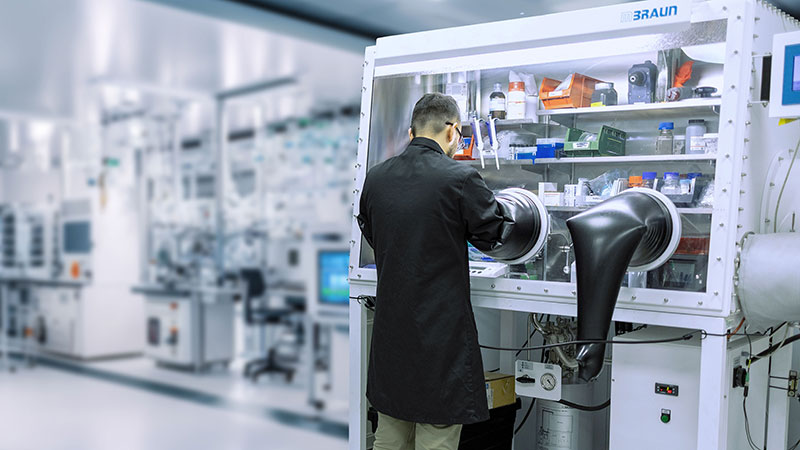From Light to Structure: A New Chapter in Cathode Manufacturing
In the race to electrify everything – from cars to grids – the lithium-ion battery has taken centre stage. Engineers have pushed its performance, chemists have tweaked its chemistry, and manufacturers are scaling up production at unprecedented speeds.
But beneath the surface of this high-tech sprint lies a surprisingly old problem – cathode coating. And at the heart of that problem sits N-Methyl-2-Pyrrolidone, better known in the industry as NMP.
NMP has been the go-to solvent for dissolving binders in cathode slurry for years. It does the job well – until you zoom out and look at the broader consequences. Using NMP means building and running massive drying ovens. It means dealing with high energy bills. It means designing solvent recovery systems just to meet compliance. And most importantly, it means putting worker safety at risk due to NMP’s known toxicity and reproductive hazards. Add to that a growing list of regulations – like the EU’s REACH directive – that are pushing this solvent closer to the edge of obsolescence. If we’re serious about scaling battery production in a world striving for net-zero, we need a better way.

What if we could eliminate NMP altogether?
The answer came not from conventional battery manufacturing, but from our roots in photopolymer chemistry and additive manufacturing. Instead of relying on solvents and heat to form the electrode, what if we could use light? And that’s exactly what we did.
We’ve developed a photopolymer-based binder system that requires no solvents, no drying ovens, and no high energy inputs. Instead, it cures rapidly under UV or LED light, forming a stable, uniform cathode coating.
One of the biggest challenges with photopolymers in battery applications is the very nature of the materials we’re coating. Cathode powders – especially dark ones like NMC or LFP – tend to absorb light. That’s a problem when your curing process depends on it.
By tuning photoinitiators, modifying resin chemistry, and optimising the wavelength of exposure, we made sure our binder system cures quickly and evenly, even with highly light-absorbing powders. The result is a smooth, reliable, and scalable cathode coating process that dramatically reduces environmental impact and cost.
As new gigafactories rise across the UK, Europe, and beyond, the pressure is mounting to adopt smarter, cleaner ways to build the batteries that will power our world. This isn’t just a marginal gain – it’s a paradigm shift already underway. From light to structure, we’re redefining cathode manufacturing, and the question is no longer whether we should move beyond NMP, but how fast we can make it happen.
This transition can’t happen in isolation. Gigafactories, automotive OEMs, and Tier 1 suppliers play a critical role in supporting small businesses and breakthrough technologies. By partnering with innovators, opening pilot lines, and embedding scalable solutions early in the supply chain, industry leaders can help unlock cost, ESG, and performance advantages across the battery ecosystem.